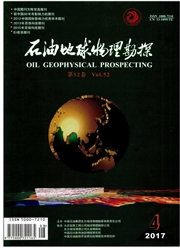

 中文摘要:
中文摘要:
同时来源的获得作为一个经济、有效的获得方法被认出了,但是因为邻近的来源的干扰,同时来源的数据的直接成像生产移植人工制品。克服这个问题,我们用在转换模型上强加稀疏限制的单个光谱分析技术建议调整最少平方的反向的时间迁居方法(RLSRTM ) 。另外,单个价值的差别光谱理论被介绍以便 RLSRTM 能适应地被实现消除迁居人工制品。与一个扁平的层模型和一个 Marmousi 模型上的数字测试,当处理同时来源的数据,不完全的数据和吵闹的数据时,我们与 LSRTM 相比验证 RLSRTM 的优异成像质量,效率和集中。
 英文摘要:
英文摘要:
Simultaneous-source acquisition has been recog- nized as an economic and efficient acquisition method, but the direct imaging of the simultaneous-source data produces migration artifacts because of the interference of adjacent sources. To overcome this problem, we propose the regularized least-squares reverse time migration method (RLSRTM) using the singular spectrum analysis technique that imposes sparseness constraints on the inverted model. Additionally, the difference spectrum theory of singular values is presented so that RLSRTM can be implemented adaptively to eliminate the migration artifacts. With numerical tests on a fiat layer model and a Marmousi model, we validate the superior imaging quality, efficiency and convergence of RLSRTM compared with LSRTM when dealing with simultaneoussource data, incomplete data and noisy data.
 同期刊论文项目
同期刊论文项目
 同项目期刊论文
同项目期刊论文
 期刊信息
期刊信息
